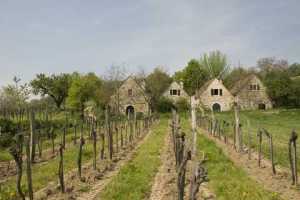By Madeline Blasberg, Staff Writer
Etching Expressions (Custom Etched Wine Bottles)
When it comes to rosé wine, some wine lovers embrace the refreshing, light-bodied fruitiness and elegant salmon hues … while others shiver at the thought of mass-produced, numbingly sweet grape juice that hardly deserves to sit on the shelf with “real wine.”
Since the 1970s, rosé wine has earned both accolades and adversaries in the U.S., but surprisingly, neither side knows all that much about what rosé wine is or where it comes from.
Rosé wine goes by many names:
- rosado in Portugal
- rosato in Spain
- rosé in the U.S. and France
- blush or pink wine everywhere in-between
Whatever its name, rosés serve a particularly special role in wineries around the world. After the grape harvest, rosés are generally the first wines out the door and off to market. Most are ready to drink in as little as four months after harvest, and are generally at their most delicious within the first year. This means that while winemakers focus on producing and aging reds and whites, rosé wines can clear out space and generate much needed revenue for the winery.
However, before bottles of this pink potion head to market, they have to be skillfully made in one of two ways. These two basic recipes for producing rosé wine come down to one thing: skin contact. A grape’s skin contains all kind of chemical compounds, including color pigment. As the skins and juice remain in contact with one another (a process known as maceration), the skin stains the juice with yellow or red hues. The longer the contact, the deeper the stain. The two processes for making rosé wine come down to how this color staining takes place.
In the first process, known as saignée (French for bleeding), rosé wine is taken away from a bigger batch of red wine. The grape juice and grape solids hang out in a tank together before fermentation begins, allowing color and aromas to be extracted from the solid grape bits – a period that can range from a few hours up to a couple days. Winemakers then drain away (bleed off) some liquid, which concentrates the red wine and allows for the rosé wine to be fermented separately.
The second process is known as vin gris (meaning gray wine). In vin gris, grapes are picked especially to make rosé wine and are produced in the same way as white wine – straight to the press, the solids are discarded, and the liquid is fermented. In this case the liquids and solids have very little contact with each other, which is why these rosés tend to be quite pale in color.
A common misconception is that rosé wines are the resulting cocktail of red and white wines mixed together. In general, that’s not the case although some adventurous winemakers are experimenting with breaking this rule.
Rosé wines can be fermented and/or aged in oak barrels; however, generally speaking, this is not what consumers prefer. More often they are fermented at cold temperatures in neutral vessels, which helps to preserve the inherent refreshing fruitiness.
They can be made from any one red grape, or be a blend of several red varieties, and may range from bone dry to dessert sweet. In fact, some cheap rosés taste bizarrely similar to Jolly Rancher candies and are so sweet they make your teeth ache! Middle to upper-shelf dry rosés tend to be a much safer bet.
All in all, rosés tend to be refreshing, easy-drinking, inexpensive, low alcohol, and fruit-forward. Common aromas include raspberries, strawberries, watermelon, and even herbs.
When in doubt about what rosé wine to reach for, keep these tips in mind:
- Look for something from Provence. The Provence region of France is particularly recognized for making rocking rosé wines at a variety of price points.
- Since rosé wines are relatively cheap to produce (and mostly underappreciated), you can get a delicious bottle for around $15 (excellent news for your wallet).
- Choose “New World” rosés – including those from the USA and Australia – as they tend to be more fruit forward and fuller-bodied than their Old World counterpoints.
- Always make sure you know if you’re buying sweet or dry rosé before heading to the checkout counter.
(photo credit: 24thcentury via photopin cc)

 However, the most exciting way of building up a collection is to travel to top wine-producing regions on holiday, and bring back souvenirs which you can drink in the future – instantly bringing back memories of the sunshine and beautiful landscapes which went to create the unique mix of flavors.
However, the most exciting way of building up a collection is to travel to top wine-producing regions on holiday, and bring back souvenirs which you can drink in the future – instantly bringing back memories of the sunshine and beautiful landscapes which went to create the unique mix of flavors.
